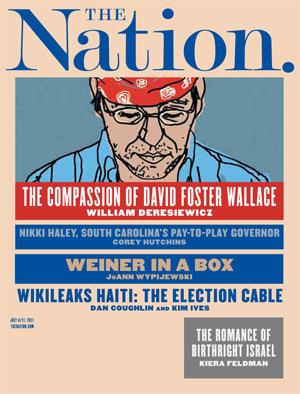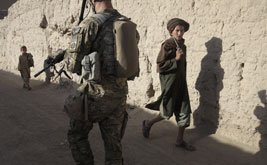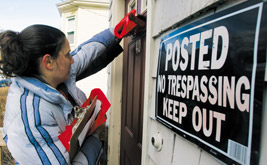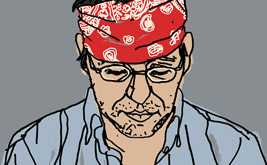Charity Begins at Home
New Orleans
Roberta Brandes Gratz’s “How Charity Hospital Died” [May 16] is rife with errors, bias and gross distortions of the truth. It appears she made no effort to seek facts that might have compromised her agenda. Despite her claims, Gratz never contacted me or anyone in my office, and I find no evidence that she tried to contact anyone from LSU Health for her story.
Dr. James Moises’ claim that the Interim LSU Public Hospital (ILH) does not provide “urgent and chronic outpatient care” and “reaches a vastly reduced patient population” is wrong. Every service the Medical Center of Louisiana at New Orleans, informally known as Charity Hospital, provided before Hurricane Katrina is available at ILH, including a Level 1 trauma center. Our outpatient services are robust and, in fact, serve a population larger than before Katrina.
Gratz’s statement relying on Lt. Gen. Russell Honoré’s assessment of Charity’s post-Katrina status collapses with the most basic research. General Honoré changed his position on Charity’s condition and said the storm destroyed the hospital, as the Times-Picayune reported on August 24, 2009
(nola.com/politics/index.ssf/2009/08/ fema_dispute_over_charity_hosp.html).
This article (and another, on August 6) discusses the binding arbitration that would determine the extent of damage to Charity, and clearly disproves Gratz’s statement that LSU pressured FEMA to increase its damage estimate from $23 million to
$475 million. Does she really think LSU can pressure a federal agency like FEMA to revise its assessment by $452 million?
Allegations by nameless people of sabotage in the hospital are unsubstantiated. No evidence exists that these events occurred.
Gratz’s statement, “In 2004, an entire wing of Charity was converted to private single-patient rooms for non–publicly funded patients” is false.
Gratz mischaracterizes the report from the Public Affairs Research Council, and her allegation that LSU is scheming to abdicate its responsibility to our indigent patients is offensive. The Memorandum of Understanding approved by the LSU board of supervisors and the State of Louisiana, which spells out how the new University Medical Center (UMC) will be run, clearly states that the hospital will maintain its role as a safety net. LSU has always served a dual mission of indigent healthcare and academic training.
A simple review of the February 11, 2009, letter from Jerry Jones, assistant commissioner for the Louisiana division of administration, to James Fannin, chair of the state appropriations committee, would have revealed to Gratz the major problems with the RMJM Hillier study, which she cites to indicate the soundness of Charity Hospital post-Katrina. The letter also lists the public meetings on the Charity replacement held in compliance with the National Environmental Policy Act and the National Historic Preservation Act, despite State Treasurer John Kennedy’s assertions to the contrary.
Gratz grossly mischaracterizes the area where the UMC will be built. Long before the storm, the area suffered from blight, neglect and abandoned properties. A Louisiana Office of Facility Planning assessment shows that less than a third of the properties in the LSU footprint were in use.
She also says an interstate highway will separate the UMC from downtown, implying inaccessibility; but she fails to mention that the interstate is raised, has numerous streets running under it and is not in any way an obstruction to the UMC site, which is two blocks from Charity on the same
unobstructed street.
Gratz violates the basic tenets of journalism, namely neutrality and objectivity.
MARVIN McGRAW, director, communications and media relations, LSU Health
Gratz Replies
New York City
It’s good to hear, finally, from LSU, as all attempts to contact it for my article failed.
To claim that “every service…provided before Hurricane Katrina is available at ILH” is quite contrary to the experience of New Orleanians. Specialty outpatient services and the days and hours available to patients are not at the pre-Katrina standard. Not reopening the medical-ready Charity Hospital left New Orleans without a Level 1 trauma unit for eight months. It eliminated the medical home of many African-American, poor and working people who were struggling to return.
The assessment of Charity’s post-Katrina status in my article definitely did not rely on Lt. Gen. Russell Honoré’s letter to President Obama (signed with five others), nor has he retracted that letter. Honoré adjusted his position after the government bailout of Wall Street, commenting to friends that the healthcare infrastructure of New Orleans should be bailed out as well. In addition, Marvin McGraw has apparently overlooked the sworn, notarized affidavit of Army Staff Sgt. John Johnson, quoted in my article.
On-site cleanup volunteers’ reports of sabotage have been consistent.
Charity’s fifth-floor west wing was indeed converted into beautiful private rooms of great appeal to people who could pay.
Project Worksheet #PW2175Ver3 from FEMA documents the back-and-forth dispute over the reimbursement amount, which went from $23 million to $475 million. The arbitration hearing was closed to the press and the public, despite protests from reporters and citizens. Before the hearing FEMA staff who had opposed LSU’s damage estimates were transferred or reassigned. FEMA attorneys failed to call credible witnesses to testify and, yes, LSU and its staunch advocate, US Senator Mary Landrieu, wield considerable power.
The February 11, 2009, letter from Jerry Jones (which I did not mention) has been refuted in excruciating detail elsewhere. The essential facts of the RMJM Hillier study remain accepted by many: that the historic Charity building could be retrofitted into a state-of-the-art hospital for considerably less money, time, disruption of people’s lives and demolition of their homes than the current plan—and still can. The public meetings I referred to addressed only specific, narrow issues. There were no meaningful public hearings held by elected officials at the local level to determine the wisdom of this mega-project, which has resulted in the destruction of hundreds of rebuilt homes and businesses in a historic neighborhood and will delay essential medical care for years. Every significant decision was made behind closed doors. As State Treasurer John Kennedy said, “Alternatives were never thoroughly and publicly discussed.”
McGraw’s description of the bulldozed neighborhood as “blighted” insults the hard-working residents who came back after Katrina, rebuilt or were rebuilding their homes (often with government funds) and struggling to rebuild their lives. The term “blight” is a convenient government term applied to any neighborhood to be sacrificed for a new development scheme. Measuring blight by the number of vacant houses would put the whole city at risk.
I said the highway “separates” the new hospital from the downtown; it does.
Even though there is still no business plan for the new facility and insufficient funds to build it, the neighborhood continues to be demolished. At the June 2 hospital board meeting, consultants reiterated that the plan calls for considerably more beds than will be needed, will require a $100 million annual state subsidy and at least $147 million in start-up cash from the state.
ROBERTA BRANDES GRATZ Read More
Our Readers and Roberta Brandes Gratz










